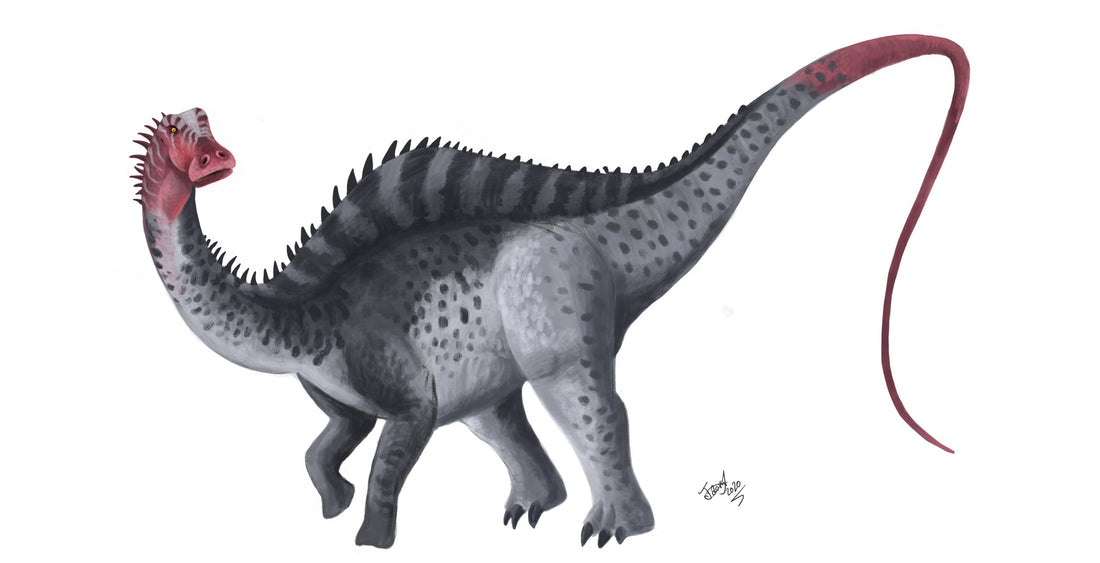
Rebbachisaurus, Moroccan sauropod with tall spines
Share
Rebbachisaurus was a sauropod, a long-necked, long-tailed heavy-bodied plant-eating dinosaur. The sauropods comprise the longest, and heaviest, animals to ever have walked the earth, exceeding 80 tons and 130’ long. Rebbachisaurus is light for a sauropod dinosaur, weighing around 10 tons (20,000 lbs) and measuring “only” 50’ in length.
Rebbachisaurus is the name-bearer of a family of sauropod dinosaurs, the Rebbachisaurids, with very tall dorsal neural spines. These spines stood up to 4’ tall and either created a tall sail down its back, or they were covered in fat and muscle and made for an interestingly shaped animal. If the spines weren’t covered in fat or muscle then they may have been used for temperature regulation or to attract mates. Living alongside Rebbachisaurus was the sail-backed Spinosaurus and the sail-backed iguanodon Ouranosaurus. One wonders what was going on in that area that made having a sail a competitive advantage for survival? Was it extra hot, as the extra surface area would have helped dissipate heat as elephant ears do? Wildly varying temperatures such that those with a sail could more quickly absorb the sun and warm up faster? Was it hard to see and they needed giant billboards to let others of their kind know they were there? Did a bigger spine attract more mates?
Rebbachisaurus’ teeth look like pencils. Its nose sat up high on its head, slightly in front of the eyes. The teeth are only in the very front of the mouth. This combination suggests it spent all day shoving its face into foliage, stripping leaves off of plants. Contrast these teeth with those of Camarasaurus, a dinosaur that lived alongside a close cousin of Rebbachisaurus. Camarasaurus teeth look like massive triangular spoons. The drastic shape difference between the two sauropods living side by side indicates they ate different kinds of plants, like giraffes, elephants, and rhinos of today, three giant herbivores co-existing in the same place.
Rebbachisaurus possessed a long, whiptail, a feature it shared with its cousins Apatosaurus and Diplodocus. The distal tail bones, which look like an adult human’s middle finger, often exhibit signs of injury, with many having been broken and re-healed, suggesting the tails were used for defense. Their powerful hips could generate huge forces thus being struck by a whiptail would cause massive amounts of damage upon impact. The tail’s tip could, theoretically, have broken the speed of sound like an actual whip does today (that breaking of the sound barrier is what causes a whip’s cracking sound). The loud “crack” may have been used to communicate, compete with rivals, or to serve as a warning to predators.
A recent study on Rebbachisaurus suggested it may have had special bracing in its vertebral column to support an extra-heavy stomach, the first time to my knowledge such an interesting feature has been identified in a sauropod. The illustration below reflects this trait.
Watch a video with more information about Rebbachisaurus here.
Purchase Rebbachisaurus teeth casts as part of the Ultimate Herbivores crate here.